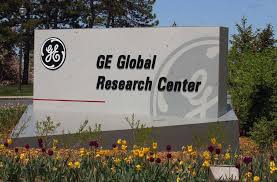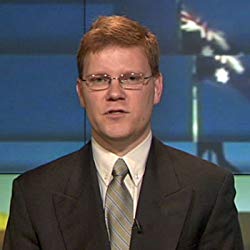Blog
-

Geiger Readings for Oct 29, 2018
Ambient office = 93 nanosieverts per hour
Ambient outside = 112 nanosieverts per hour
Soil exposed to rain water = 109 nanosieverts per hour
Blueberry from Central Market = 133 nanosieverts per hour
Tap water = 70 nanosieverts per hour
Filter water = 66 nanosieverts per hour
-

Geiger Readings for Oct 28, 2018
Ambient office = 135 nanosieverts per hour
Ambient outside = 85 nanosieverts per hour
Soil exposed to rain water = 87 nanosieverts per hour
Carrot from Central Market = 115 nanosieverts per hour
Tap water =98 nanosieverts per hour
Filter water = 94 nanosieverts per hour
-

Geiger Readings for Oct 27, 2018
Ambient office = 121 nanosieverts per hour
Ambient outside = 90 nanosieverts per hour
Soil exposed to rain water = 80 nanosieverts per hour
Green bell pepper from Central Market = 100 nanosieverts per hour
Tap water =101 nanosieverts per hour
Filter water = 96 nanosieverts per hour
Dover sole – Caught in USA = 115 nanosieverts per hour
-

Nuclear Reactors 628 – General Electric’s Global Research Center Is Working On Improved Nuclear Fuel Rod Designs And Materials
The U.S. Department of Energy (DoE) has just awarded a three hundred and three million seven hundred thousand dollar grant to General Electric’s Global Research Center (GRC) for the continued development of a new type of nuclear fuel rod. The GRC will be collaborating with three national laboratories in the project.
The grant is for a two and a half year project to develop and demonstrate new, more resilient nuclear fuel rods. These new rods will have improved performance in normal circumstances as well as accident situations. GE is bringing its expertise in materials science, 3D printing and jet engine technology to the project. The GRC has been working with a GE-led joint venture named Global Nuclear Fuels (GNF) as well as the Los Alamos, Oak Ridge and Idaho National Laboratories. They are also partnering with Southern Nuclear and Exelon Generation.
GNF has developed a new design for fuel rods called IronClad. This work was part of the DoE’s Accident Tolerant Fuel Program which was launched in 2012. This program was dedicated to the creation of new cladding materials and fuel materials that could better survive a loss of coolant in the core of a nuclear reactor. The new fuel rods were also being developed to improve fuel performance and economics during normal operation of the reactor. ARMOR coating for zirconium cladding was also developed with the help of the DoE program. This new addition to fuel rod cladding has greater resistance to oxidation and protects fuel rods against debris fretting which is the formation of “rust” and pitting of a metal surface in the absence of water.
Evan Dolley is the technical operations leader in metals at GE Global Research. He said, “With the DOE’s support and in partnership with our National Lab and utility partners, we have an extraordinary opportunity to accelerate our ongoing fuel rod work and ultimately deliver new technologies to market that benefit our US nuclear facilities and those globally.”
Dolly said that the project team is employing the technical expertise of GE’s Aviation and Additive divisions. Ceramic matrix composites (CMCs) are high temperatures materials that are used in commercial jet engines to improve performance and efficiency. CMC are being applied to the channel boxes that enclose the fuel rods. Metal endcaps for prototype fuel rods are being 3D printed. Dolley said, “With the integration of nuclear-grade CMCs, we can exploit the higher heat properties of ceramics to build an even more resilient system. And the use of additive is designed to enable a more rapid response if spare parts are needed for other reactor components.”
Earlier this year, test assemblies of accident tolerant fuel rods using GNF materials were loaded into Southern Nuclear’s Hatch Unit 1 near Baxley, Georgia. Two different types of IronClad test rods were used. One of test rods was a standard rod without fuel inside. The other is a solid bar of IronClad material shaped like a fuel rod. There are also plans for such test rod assemblies to be loaded into Exelon Generation’s Clinton power plant near Clinton, Illinois in 2019. -
Nuclear News Roundup Oct 26, 2018
The National Nuclear Security Administration, a semi-autonomous agency of the US Department of Energy (DOE), has issued a contract termination notice to the consortium building the a mixed-oxide (MOX) fuel fabrication facility at the Savannah River Site in South Carolina. About 70% complete, the facility was intended to dispose of 34 tons of weapons-grade plutonium by turning it into fuel for commercial nuclear reactors. World-nuclear-news.org
Hitachi Nuclear Energy Europe, Ltd., (HNE) said Monday that it had appointed three additional partners to support delivery of Wylfa Newydd project in the United Kingdom, noting that each of the three were “a significant UK employer.” Nuclearstreet.com
The construction of a nuclear research reactor in Zambia with Russia’s assistance is expected to begin in 2019, Shadreck Luwita, Zambia’s ambassador to Russia, told Sputnik following the Southern African Development Community (SADC) Investment Forum in Moscow. Sputniknews.com
China is building more nuclear-armed submarines to stay one step ahead of the U.S. and other adversaries. Popularmecahnics.com
-

Geiger Readings for Oct 26, 2018
Ambient office = 116 nanosieverts per hour
Ambient outside = 96 nanosieverts per hour
Soil exposed to rain water = 100 nanosieverts per hour
Yellow bell pepper from Central Market = 135 nanosieverts per hour
Tap water =138 nanosieverts per hour
Filter water = 122 nanosieverts per hour
-

Nuclear Weapons 360 – Australian Professor Discusses Nuclear Weapons
Australia has a complex relationship to nuclear issues. They are a major exporter of uranium for nuclear fuel to global markets, but they have rejected the use of nuclear reactors for the generation of electricity although that policy is currently being debated. There are scattered stores of low-level nuclear wastes at over one hundred sites that should be consolidated. Australia has never had an arsenal of nuclear weapons and has enjoyed the U.S. “nuclear umbrella” for defense against foes armed with nuclear weapons. Recently, however, there have been calls for Australia to develop its own nuclear weapons in response to recent U.S. statements to the effect that the U.S. nuclear umbrella may be withdrawn from countries in southeast 6Asia including Australia, Japan and South Korea.
Australia was caught up in the Cold War. They provided uranium to Britain and allowed Britain to test nuclear weapons in the interior of Australia. They build planes that could be used to deliver nuclear warheads. However, after the Vietnam war, Australia ended its involvement in nuclear weapons programs and ratified the Nuclear Non-Proliferation Treaty in the early 1970s.
In the last decades of the Twentieth Century, Australia’s defense policy came to depend on the U.S. nuclear umbrella and a strong conventional military force. The Australia government issued a 2016 White paper that said, “Only the nuclear and conventional military capabilities of the United States can offer effective deterrence against the possibility of nuclear threats against Australia.”
Dr. Stephan Fruhling is the Associated Dean of the College of Asia and the Pacific at the Australian National University. Dr. Fruhling believes that Australia’s continuous coastline gives it the unique opportunity to create a “moat” of tactical, short-range nuclear weapons to repel air and martime attacks. In an interview, he said, “In air and naval battle on the high seas, nukes can now be employed without significant risk of collateral damage, much like conventional war heads. Australia could establish a maritime exclusion zone in wartime, to increase the military risk for any country planning a major attack against the continent.”
If Australia decided to develop its own nuclear arsenal, one major repercussion might be to lose its access to US intelligence, technology, and weapons systems. Dr. Fruhling said, “Before investing in a nuclear program I think we would have to make a genuine attempt at trying to draw closer to the United States and its nuclear arsenal.”
Another major repercussion has to do with the strategic situation in southeast Asia with respect to Indonesia. There are fears that if Australia began working on a nuclear weapons program, Indonesia might follow suit. Dr. Fruhling said, “Indonesia has regional leadership ambitions, and a strong sense of independence and will, in coming years, tower over Australia economically as well as in population terms. Australian acquisition of nuclear weapons would strengthen Indonesia’s reasons to reciprocate, for status as well as security.” Dr. Fruhling believes that the fact that Australia does not have nuclear weapons is very important in discouraging Indonesia and other regional powers from pursuing their own nuclear weapons programs.
Dr. Fruhling believes that Australia should only consider the development of a nuclear arsenal if there is a direct existential threat to Australia. He said, “I think we would have to genuinely feel under existential threat by a great power from Asia. A serious study would be the key to assessing whether nuclear weapons could really be a solution to our prospective security problems, rather than a distraction from them.”
